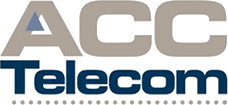Below you’ll find tips on applying for PPP and the next steps if you’ve received your funding.
Tips for Applying for Payroll Protection Program:
It appears as though the PPP will be extended to include an additional $310B, perhaps as early as today, Wednesday, April 22, 2020. If your business either did not receive approval or missed the initial PPP loan window, you should be ready to move quickly on the next wave of applications.
Check with your bank or other banks immediately to see if they are still accepting PPP loan applications. If you wish to participate in this next round of funding, submitting a complete application to your lender as soon as possible is of paramount importance.
The following is a list of common items that banks are requesting with PPP loan applications. All of these reports should be scanned into a PDF format and ready to upload to your banking portal with the application:
- Legal name of the business and Federal Tax ID number
- Business start date
- Government-issued ID such as a driver’s license (front and back)
- Business Bank account and routing number
- Formation documents: Articles of incorporation or organization, operating agreement, by-laws, etc.
- All applicants will need to complete an application form. You should fill this out in advance to ensure you have the core information that most banks are asking for.
- 2019 IRS payroll tax reports – Forms 940, 941, W-3 & W-2.
- If you use a payroll service, many payroll companies have created a special COVID-19 payroll summary report to assist you with the data needed to complete the bank loan calculators, in addition to the payroll tax reports needed.
- 2019 General Ledger Report of group health insurance premiums paid as well as supporting statements of payments.
- 2019 General Ledger Report of retirement plan expenses as well as supporting statements of payments.
- 2019 summary of state & local taxes assessed on employee compensation.
- Other 2019 payroll data that may be needed, depending on your bank – monthly payroll report detailing salary, wages, commissions, or tips (not exceeding $100,000 annually for each employee).
- If you have employees making over $100,000, provide their W-2s and have the excess above $100K for each employee for the bank loan calculator.
- Costs for vacation, parental, family, medical or sick leave.
- January 2020 – March 2020 payroll summary report, by payroll run, that details number of employees paid and amounts paid to each.
- 2020 first quarter payroll reports.
Next Steps if You’ve Received Your Funding:
You’ve received your funding- congratulations. Now, you must document everything and submit your loan forgiveness application to request that your loan will be forgiven.
Loan Forgiveness Information:
- Covered period is the 8 week period beginning on the date of the origination of the covered loan– any eligible costs paid for with loan proceeds outside this period are not eligible for forgiveness.
- Eligible for forgiveness on payroll costs, interest on mortgage obligations, rent, & utilities only.
- Submit an application for forgiveness that includes:
-
- Number of full-time equivalent employees on payroll and payroll rates (includes payroll tax filings)
- Canceled checks, payment receipts or other documentation verifying interest, rent & utility payments
- Documentation is a MUST to qualify for forgiveness
- Lender shall issue a decision within 60 days
- Forgiveness would NOT be included in taxable income
- There is a reduction in forgiveness based on maintaining employment determined by a ratio of dividing FTEs during the covered period by FTEs during the period of the preceding year (or the FTEs from January 1, 2020 through February 29, 2020- if that’s what was used to base the loan). And/or if total salaries (of an employee who makes less than $100,000) are reduced in excess of 25% of the total salary of an employee during the most recent full quarter–this basically means you need to maintain the same level of rates of employees.
- If you currently have a reduction in employees from the period of February 15, 2020 through 30 days from enactment date of this act from the previous year due to layoffs and you bring those people back by June 30, 2020 there is no reduction
- If you have received the $10,000 advance under the EIDL your forgiveness will be reduced by that amount.
*Disclosure: The material contained within this email is for general information purposes only and should not be relied upon as a basis for making any business, legal, or other decisions. As always, we encourage you to contact your Accounting and Legal team for guidance.
Learn more about ACC Telecom by visiting our website at www.acctelecom.com.

